Related Research Articles
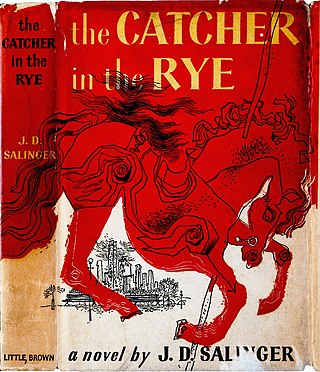
The Catcher in the Rye is an American novel by J. D. Salinger that was partially published in serial form 1945–46 before being novelized in 1951. Originally intended for adults, it is often read by adolescents for its themes of angst and alienation, and as a critique of superficiality in society. The novel also deals with complex issues of innocence, identity, belonging, loss, connection, sex, and depression. The main character, Holden Caulfield, has become an icon for teenage rebellion. Caulfield, nearly of age, gives his opinion on a wide variety of topics as he narrates his recent life events.

Penelope Mary Fitzgerald was a Booker Prize-winning novelist, poet, essayist and biographer from Lincoln, England. In 2008 The Times listed her among "the 50 greatest British writers since 1945". The Observer in 2012 placed her final novel, The Blue Flower, among "the ten best historical novels". A.S. Byatt called her, "Jane Austen’s nearest heir for precision and invention."
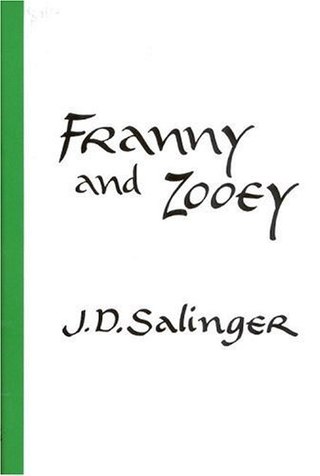
Franny and Zooey is a book by American author J. D. Salinger which comprises his short story "Franny" and novella Zooey. The two works were published together as a book in 1961, having originally appeared in The New Yorker in 1955 and 1957 respectively. The book focuses on siblings Franny and Zooey, the two youngest members of the Glass family, which was a frequent focus of Salinger's writings.

"For Esmé—with Love and Squalor" is a short story by J. D. Salinger. It recounts a sergeant's meeting with a young girl before being sent into combat in World War II. Originally published in The New Yorker on April 8, 1950, it was anthologized in Salinger's Nine Stories two years later.
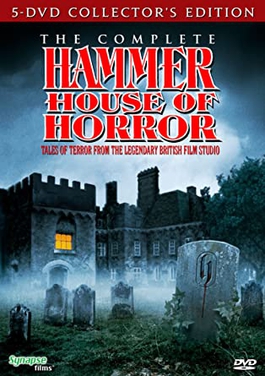
Hammer House of Horror is a British television series made in 1980. An anthology series created by Hammer Films in association with Cinema Arts International and ITC Entertainment, it consists of 13 hour-long episodes, originally broadcast on ITV.
"That Evening Sun" is a short story by the American author William Faulkner, published in 1931 in the collection These 13, which included Faulkner's most anthologized story, "A Rose for Emily". The story was originally published, in a slightly different form, as "That Evening Sun Go Down" in The American Mercury in March of the same year.

Poirot's Early Cases is a short story collection written by Agatha Christie and first published in the UK by Collins Crime Club in September 1974. The book retailed at £2.25. Although the stories contained within the volume had all appeared in previous US collections, the book also appeared there later in 1974 under the slightly different title of Hercule Poirot's Early Cases in an edition retailing at $6.95.

Two Rode Together is a 1961 American Western film directed by John Ford and starring James Stewart, Richard Widmark, and Shirley Jones. The supporting cast includes Linda Cristal, Andy Devine, and John McIntire. The film was based upon the 1959 novel Comanche Captives by Will Cook.

Jessamy (1967) is a children's book by Barbara Sleigh, author of the Carbonel series. It sheds light on English life and childhood in the First World War, through a good-natured pre-adolescent female character, presented in detail, and a realistically written time-slip narrative.
Confusions is a play by Alan Ayckbourn consisting of a series of five interconnected one-act plays. It was first staged in 1974 and played by just five actors. The scenes are all loosely linked by characters or locations, but more subtly through the common underlying themes of obsession, isolation and human desire for companionship.
"Down at the Dinghy" is a short story by J. D. Salinger, originally published in Harper's in April 1949, and included in the compilation, Nine Stories.
"Teddy" is a short story by J. D. Salinger, completed on November 22, 1952, and originally published in the January 31, 1953, issue of The New Yorker. Under the influence of The Gospel of Sri Ramakrishna, Salinger created an engaging child character, Teddy McArdle, to introduce to his readership some of the basic concepts of Zen enlightenment and Vedanta reincarnation – a task that Salinger recognized would require overcoming some 1950s American cultural chauvinism.

Three Blind Mice and Other Stories is a collection of short stories written by Agatha Christie, first published in the US by Dodd, Mead and Company in 1950. The first edition retailed at $2.50.
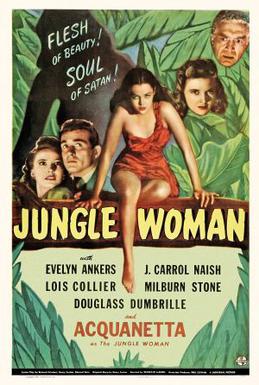
Jungle Woman is a 1944 American horror film directed by Reginald LeBorg. The film stars Evelyn Ankers, J. Carrol Naish, Samuel S. Hinds, Lois Collier, Milburn Stone, and Douglass Dumbrille. The film involves Dr. Carl Fletcher who is in court on the murder of Paula Dupree, who he explains has the ability to turn into an Ape Woman.
“Elaine” is an uncollected work of short fiction by J. D. Salinger which appeared in the March-April, 1945 issue of Story.
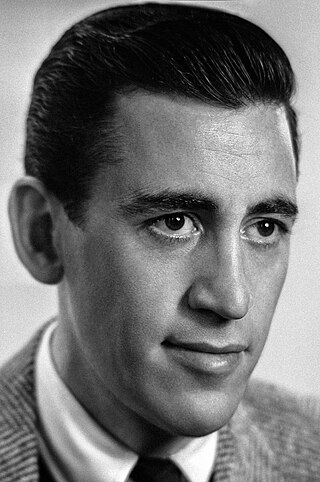
Jerome David Salinger was an American author best known for his 1951 novel The Catcher in the Rye. Salinger published several short stories in Story magazine in 1940, before serving in World War II. In 1948, his critically acclaimed story "A Perfect Day for Bananafish" appeared in The New Yorker, which published much of his later work.
Birthday Boy is an unpublished short story by J. D. Salinger.
"The Last and Best of the Peter Pans" is an unpublished short story by J. D. Salinger.

Tales of Halloween is a 2015 American comedy horror anthology film consisting of ten interlocking segments, each revolving around the titular holiday. Segments were directed by Neil Marshall, Darren Lynn Bousman, Axelle Carolyn, Lucky McKee, Andrew Kasch, Paul Solet, John Skipp, Adam Gierasch, Jace Anderson, Mike Mendez, Ryan Schifrin, Dave Parker and, in his film debut, Jack Dylan Grazer.

Three Early Stories is a posthumous publication of American author J. D. Salinger, published in 2014, comprising three stories: "The Young Folks", "Go See Eddie" and "Once a Week Won't Kill You".
References
- ↑ JD Salinger: A Bibliography.DM Fiene - Wisconsin Studies in Contemporary Literature, 1963
- ↑ J.D.Salinger Collection, 1940-1974, Series I, Box I, Folder 8 Harry Ransom Center Special Collections.
- ↑ Alexander, Paul p.84 (1999). Salinger: A Biography. Los Angeles: Renaissance
- ↑ Kenneth Slawenski.J. D. Salinger: A Life.Random House Digital, Inc., 2011.